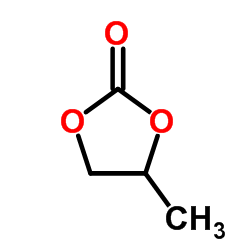| Structure | Name/CAS No. | Articles |
|---|---|---|
 |
Chloroform
CAS:67-66-3 |
|
 |
Trimethylol propane
CAS:77-99-6 |
|
 |
Dichloromethane
CAS:75-09-2 |
|
 |
Calcium
CAS:7789-78-8 |
|
 |
Propylene carbonate
CAS:108-32-7 |